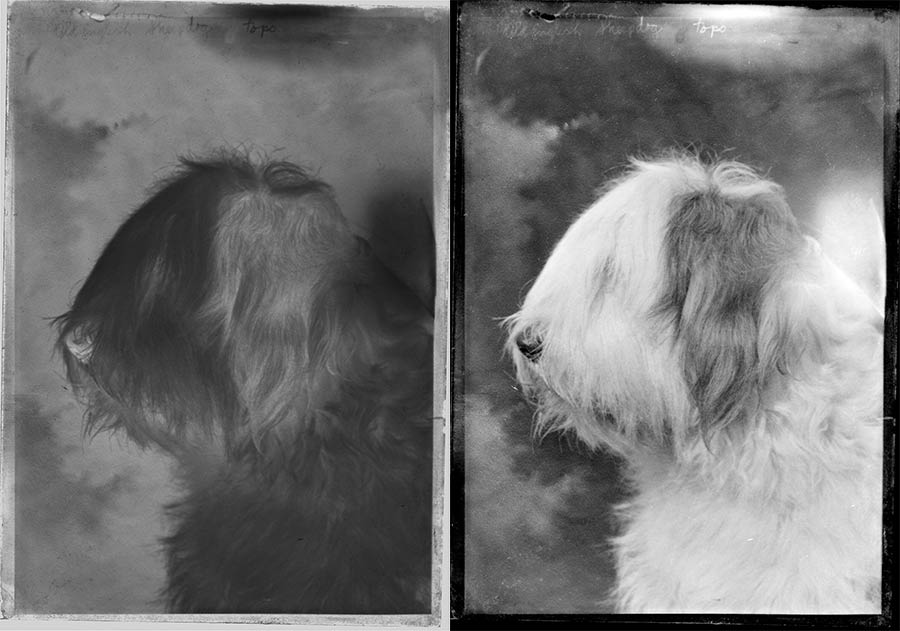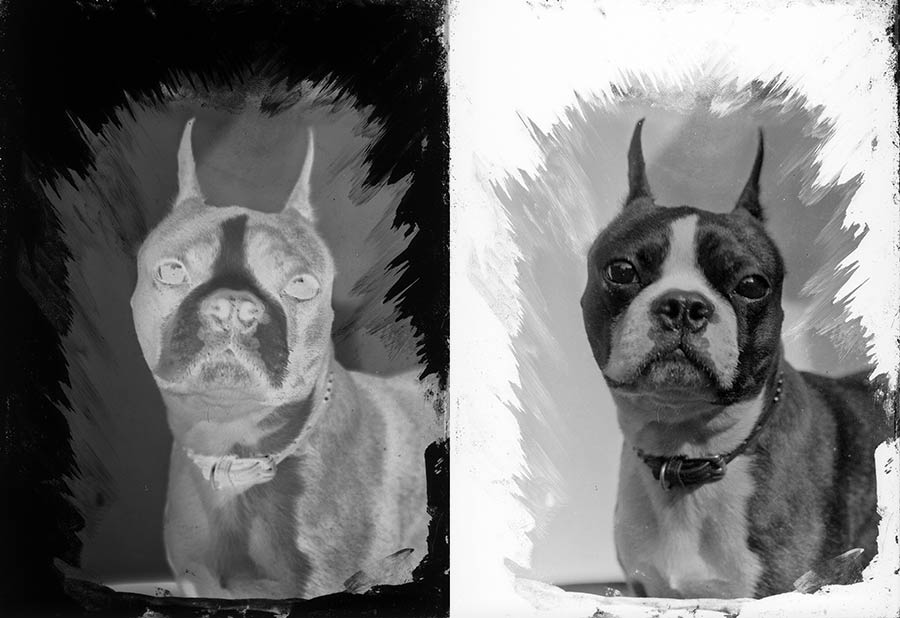
Deep in the AKC Gazette photo archive is a battered old Kodak film box. It contains several rare—and extremely fragile—glass negatives taken by Rudolph Tauskey. They date to the early 1920s. Canine photography buffs have assumed for years that all of Tauskey’s glass negatives were lost, but six survive.
Using a sophisticated scanner, the AKC Publications creative production team has struck crisp digital images from the delicate glass plates. This ensures that Tauskey’s treasures, here making their Internet debut some 90 years after they were taken, will be part of the historical record far into the future.

Int. Ch. Bellhaven Laund Logic, out of Florence B. Ilch’s famous Bellhaven kennel at Red Bank, New Jersey. We date it circa 1922, the year Mrs. Ilch imported the beautiful rough Collie from England. Laund Logic was an influential stud dog whose name factored into scores of pedigrees for many generations.

Old English Sheepdog, unidentified

This image is the most intriguing of the lot: The unidentified Wire Fox Terrier bears a resemblance to Ch. Conejo Wycollar Boy, Westminster Best in Show winner of 1917 and 1920. Circumstantial evidence suggests it might be Boy, but Fox Terriers were immensely popular in 1920s show rings and Tauskey photographed dozens of them. It will take some digging among the 18,000 volumes in the AKC Library before a positive ID can be made.

Tauskey scrawled in pencil on this Pekingese negative “beautiful head.” This plate represents a work in progress. Tauskey often painted directly onto negatives to achieve certain effects. This appears to be an intermediate step on the way to a slick advertising portrait.

Here’s another glass plate hand-prepped by the master for silhouetting in the next step of his laborious process. The subject is historically important: Charles H. O’Connor’s Boston Terrier Ch. Ace of Aces, Best of Breed winner at the Boston Terrier Club of America’s first national-specialty show, held in 1920. O’Connor’s kennel won the BTCA specialty five times in 15 years, with five different dogs.
About Rudolph Tauskey
Rudolph Tauskey was born in Vienna in 1888, and educated in Budapest. He emigrated to Canada when he was 17. By 1910 Tauskey was apprenticing for an equine photographer in New York City. He was a civilian photographer for the U.S. Signal Corps under General “Black Jack” Pershing and accompanied the general’s troops in their famous pursuit of Pancho Villa into Mexico. When America entered World War I, he enlisted in the Army. When Tauskey returned to New York after the war, he set up shop as a freelance photographer of horses.
Through his connections with wealthy horsemen, he soon received commissions from America’s leading dog-show kennels: Bellhaven, Blakeen, Giralda, Milson, and Romanoff, among them. In 1924, Tauskey accepted the job of AKC staff photographer—on the condition that he could continue to accept freelance work. The negatives presented here date to this postwar phase of Tauskey’s New York career.
“A lifelong mistrust of banks led Tauskey to keep his money hidden in the icebox,” Kerrin Winter-Churchill wrote in a 2001 AKC Gazette profile. “This seemingly neurotic habit proved to be a blessing when the stock market crashed in 1929. Always a shrewd man, Tauskey capitalized on the crash, buying a small Tudor estate in Upper Saddle River, New Jersey, for a fraction of its value. The beautiful grounds became his outdoor studio. From then on, clients traveled to him.” He was assisted in his work by his beloved wife Anna, and later, their two sons.
During his 50-year reign as king of canine portraiture, Tauskey developed a reputation as an imperious genius. “Tauskey was temperamental and famous for shunning anyone who questioned his work,” professional handler Peter Green told Winter-Churchill. “If you disagreed with him he’d close the door on your string of dogs, forever. Nobody wanted to risk that because all of our clients wanted their dogs’ pictures taken by the great master.”
Despite the rheumatoid arthritis that, from middle age on, forced him to walk with two canes, the iron-willed Tauskey worked until failing health forced his retirement at age 87. He died in 1979. Breeder-handler Wendell Sammet said of him, “When Rudy passed, so did an important chapter in the history of do

